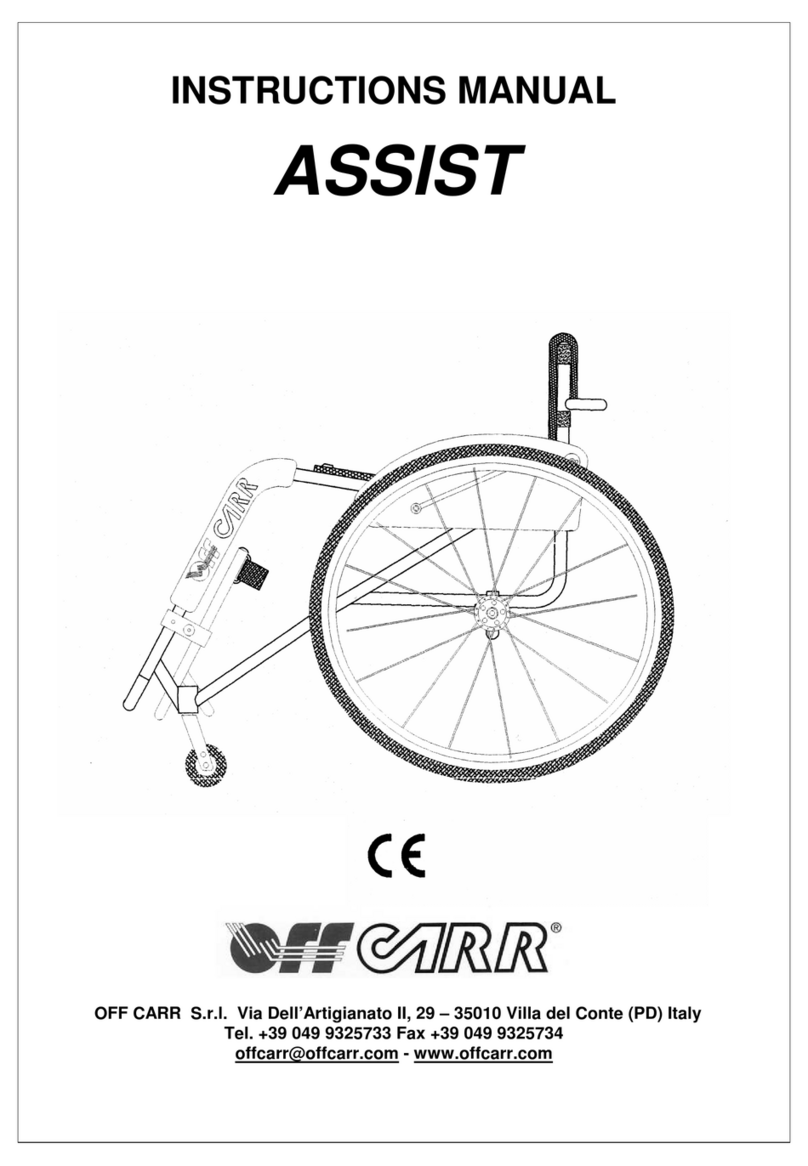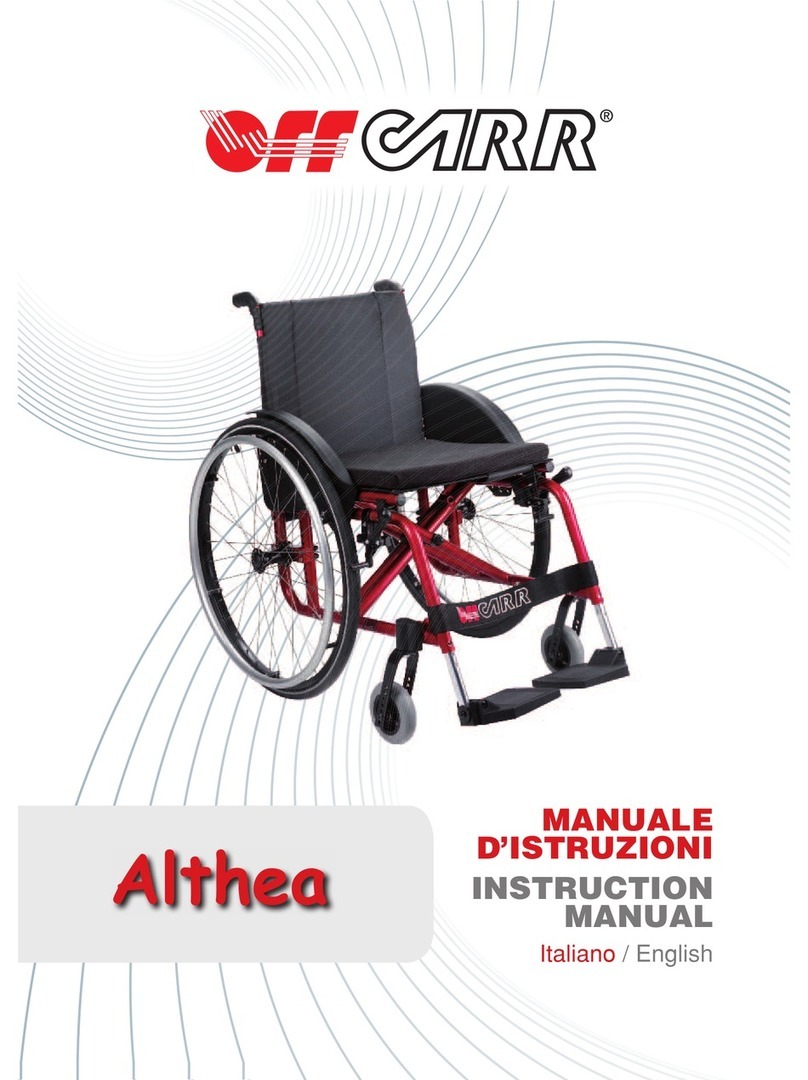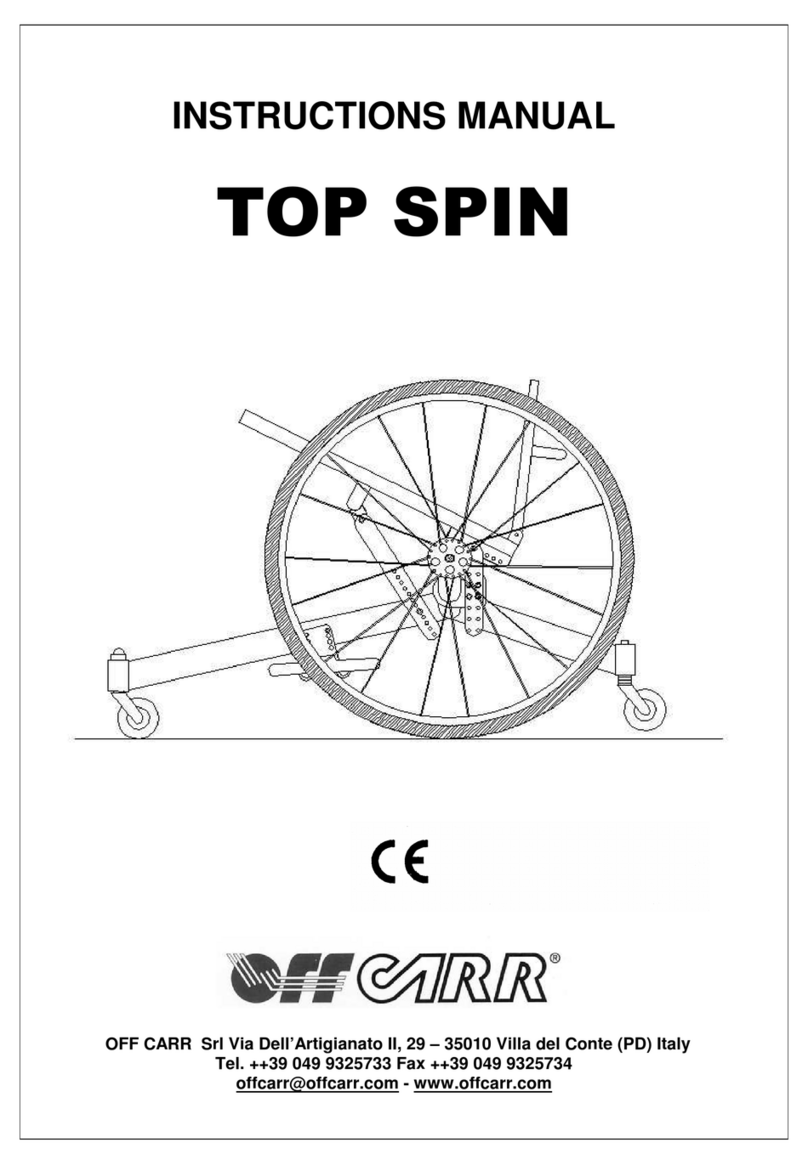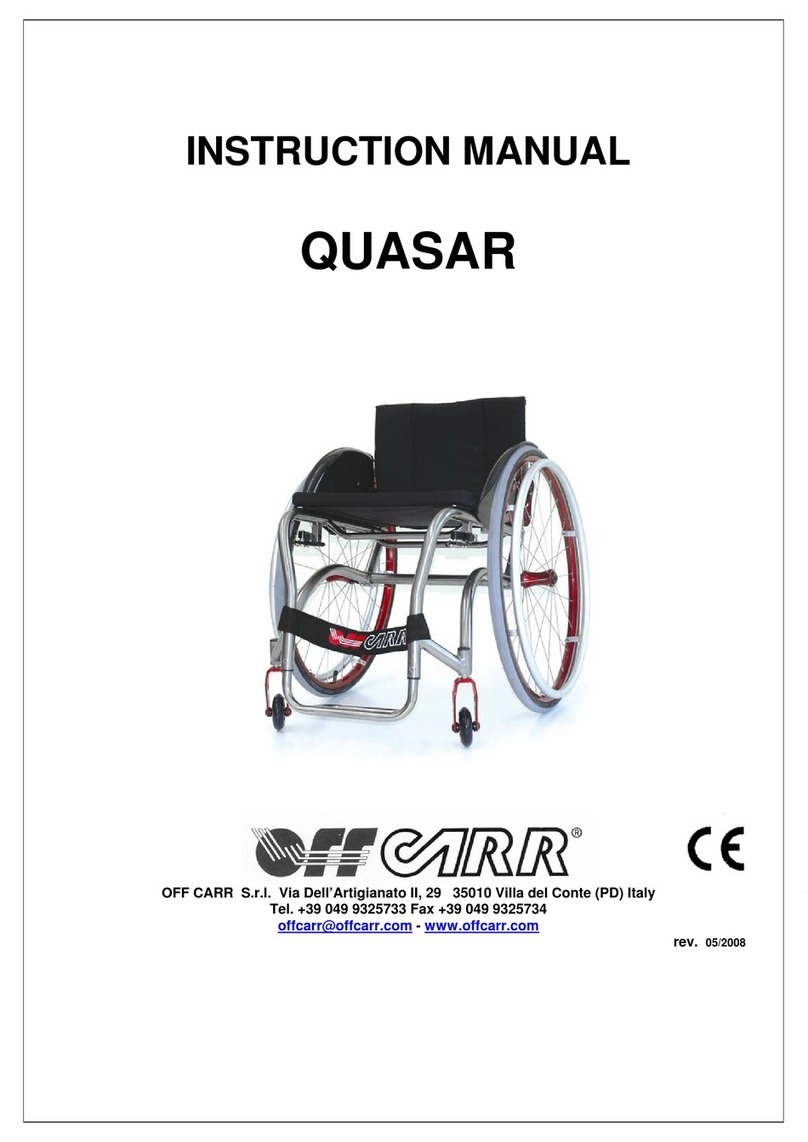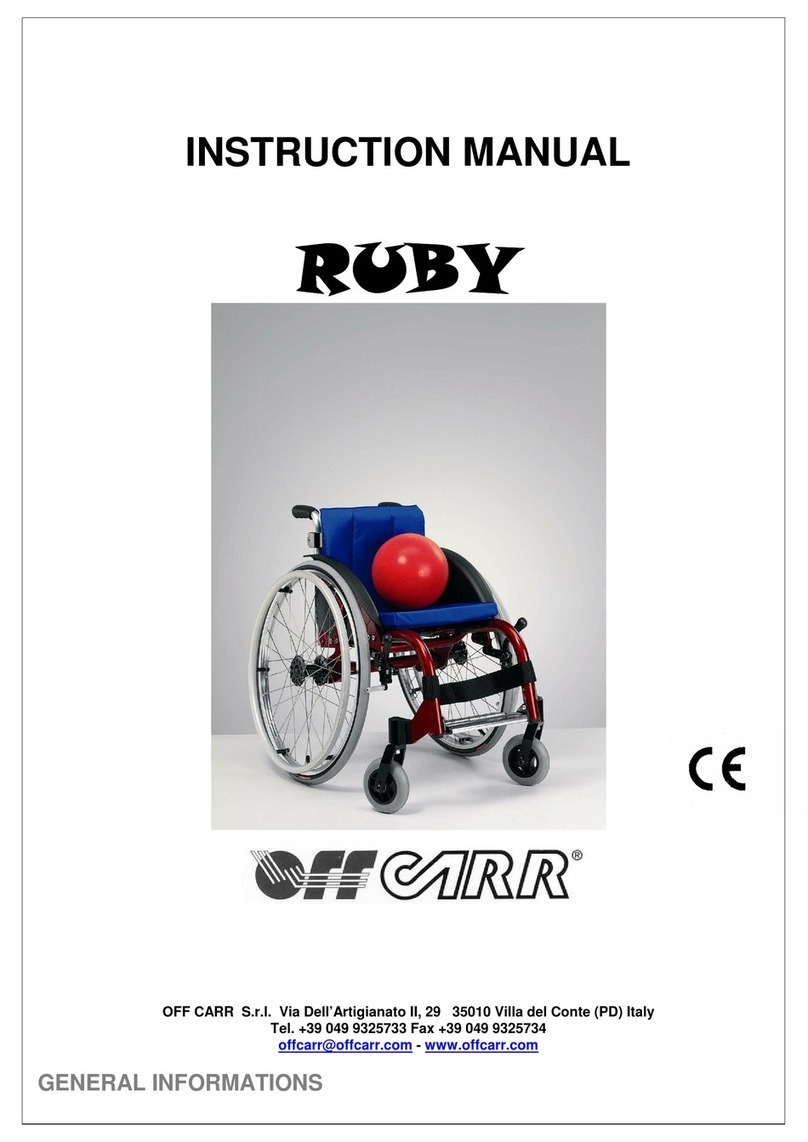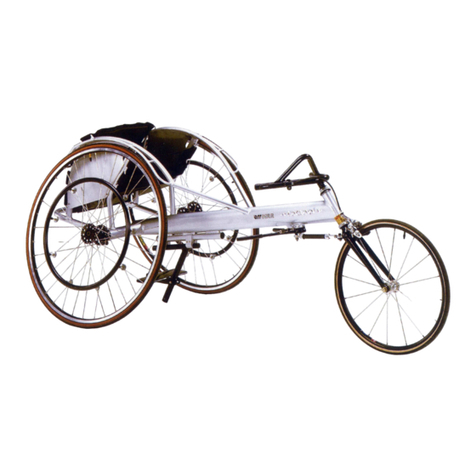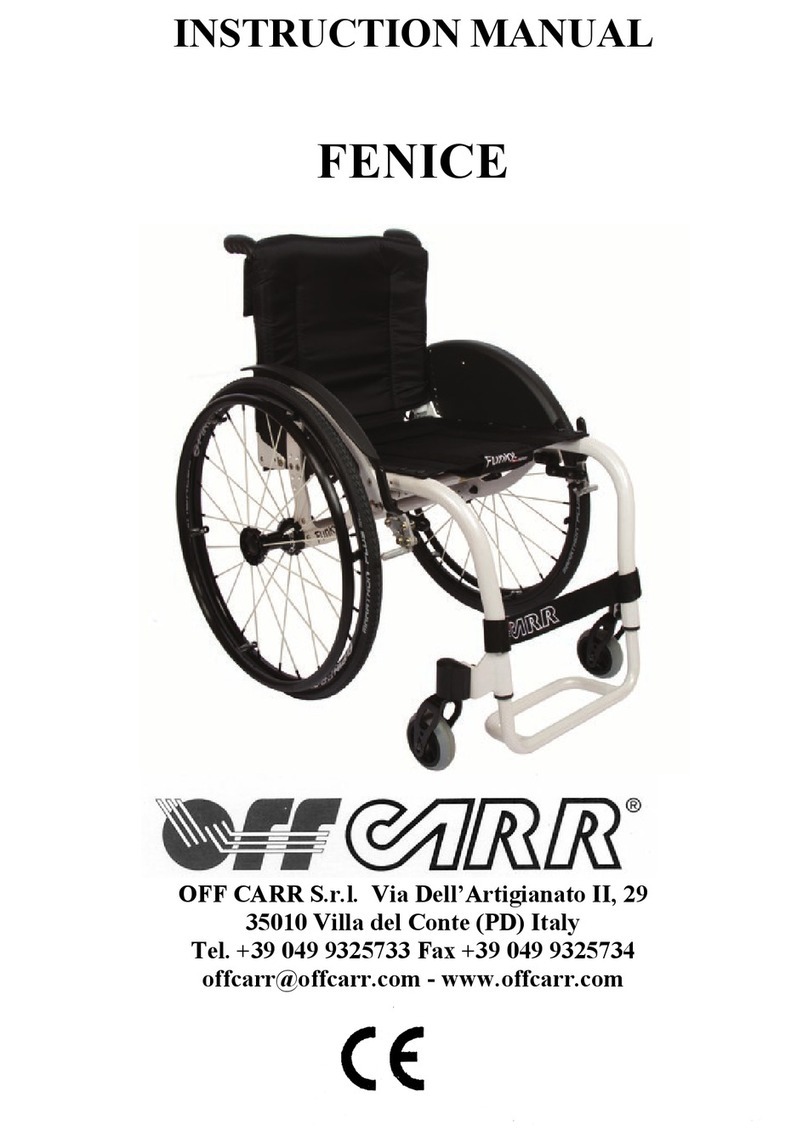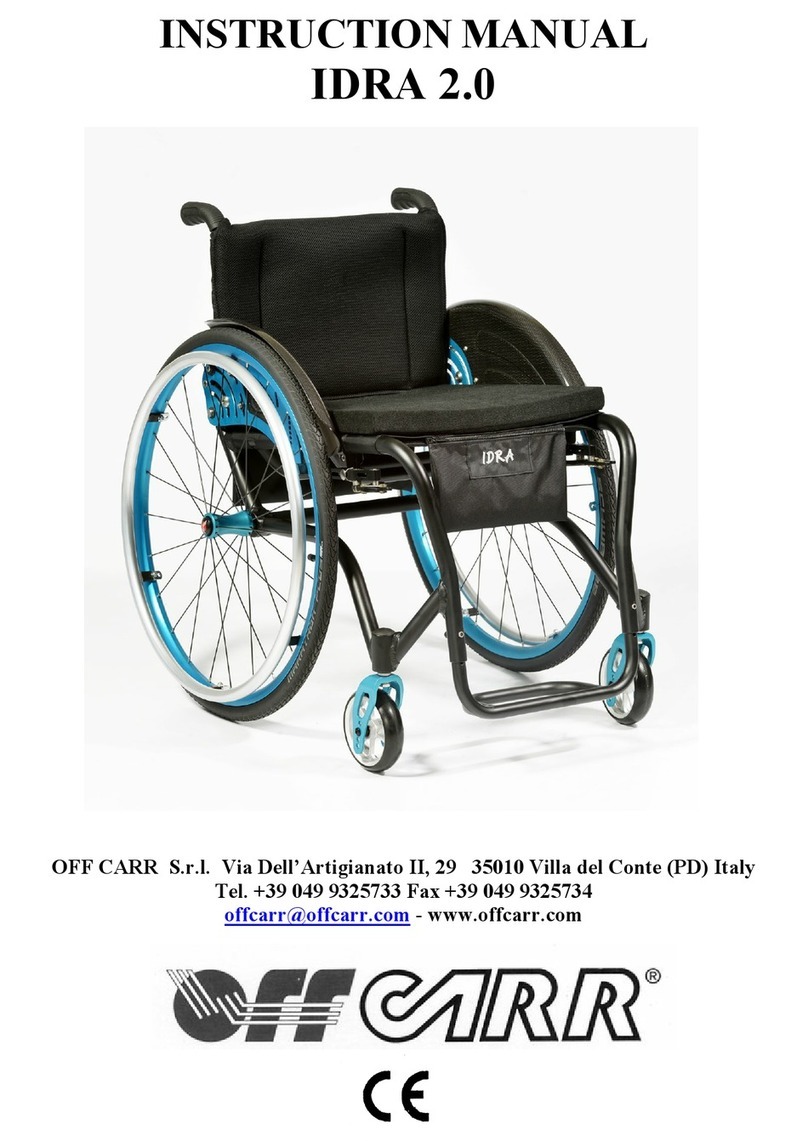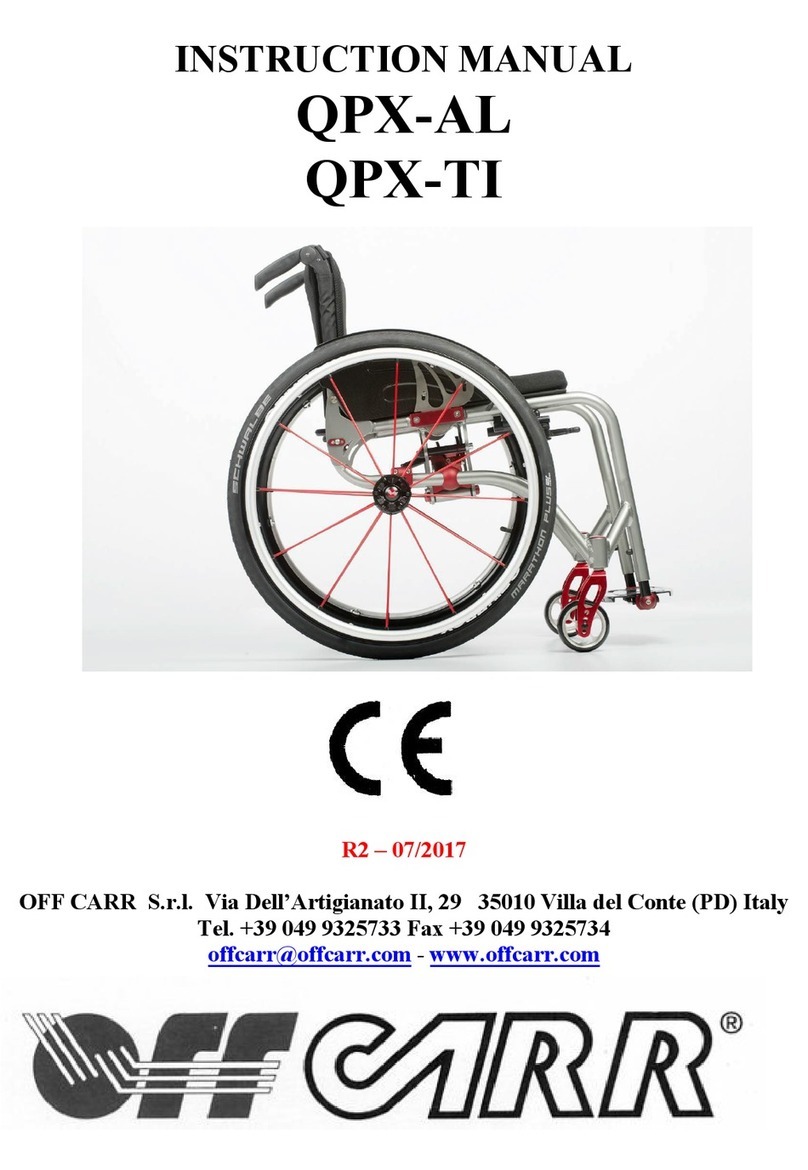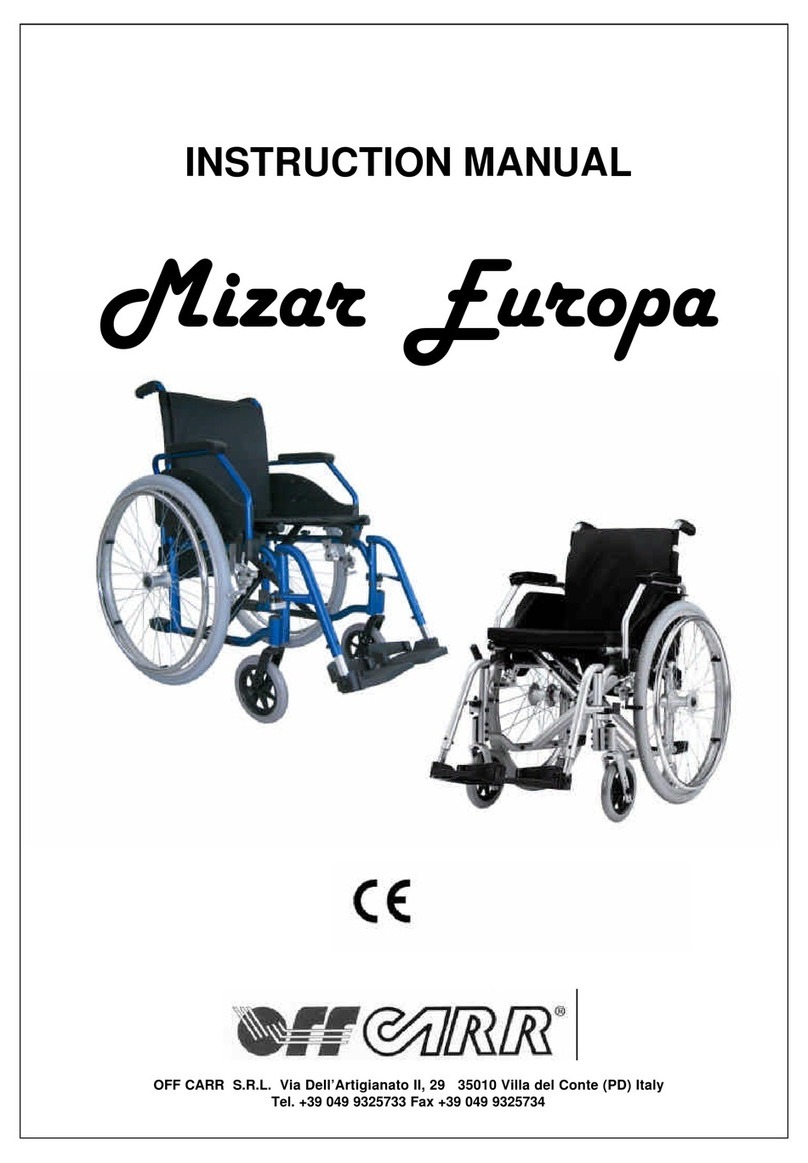
1
INDEX
1.INTRODUCTION .........................................................................................4
1.1DESCRIPTION .........................................................................................4
1.2FEATURES ..............................................................................................6
2.PREPARATION FOR USE..........................................................................6
2.1WHEELCHAIR OPENING ..........................................................................6
2.2WHEELCHAIR FOLDING ..........................................................................6
2.3TYRE PRESSURE CHECK..........................................................................6
2.4REAR WHEELS ASSEMBLY CHECK...........................................................6
2.5FOOT-REST POSITIONING........................................................................8
2.6BRAKES CHECK......................................................................................9
2.7ACCESSORIES CHECK .............................................................................9
3.SETTING UP...............................................................................................10
3.1REAR SEAT HEIGHT ADJUSTMENT.........................................................10
3.2GRAVITY CENTRE ADJUSTMENT...........................................................10
3.3REAR WHEEL CHAMBER ADJUSTMENT..................................................10
3.4FRONT SEAT HEIGHT ADJUSTMENT.......................................................12
3.5FRONT FORK SUPPORT PLATE ADJUSTMENT .........................................12
3.6BACK-REST TILT ADJUSTMENT.............................................................13
3.7SIDE GUARD ADJUSTMENT ...................................................................13
3.8BRAKES ADJUSTMENT AND MAINTENANCE ..........................................14
3.9SEAT UPHOLSTERY ADJUSTMENT AN REPLACEMENT............................14
3.10BACK-REST TENSION ADJUSTMENT ......................................................14
3.11BACK-REST HEIGHT ADJUSTMENT........................................................15
3.12HEIGHT ADJUSTABLE PUSHING HANDLES .............................................15
3.13FOOT-PLATE TO SEAT DISTANCE ADJUSTMENT.....................................15
3.14FOOT-PLATE TILT ADJUSTMENT ...........................................................15
4.ARM-REST..................................................................................................15
4.1DETACHABLE ARM-REST......................................................................17
4.2TIP-UP ARM-REST.................................................................................17
4.3HEIGHT ADJUSTABLE ARM-REST ..........................................................17
4.4“L” TYPE ARM-REST.............................................................................18
5.ANTI-TIP DEVICE.....................................................................................19
5.1CURVED REAR FRAME ANTI-TIP DEVICE ...............................................19
5.2CURVED REAR FRAME ANTI-TIP DEVICE ...............................................20
5.2.1Curved rear frame anti-tip device adjustment...........................20
5.2.2Telescopic end terminal adjustment...........................................20
5.3STRAIGHT REAR FRAME ANTI-TIP DEVICE.............................................20
5.3.1.Height adjustment anti-tip device..............................................21
6.DOUBLE PUSHRIM SINGLE DRIVE.....................................................22
7.HINGED BACK-REST...............................................................................23
8.SMALL WHEEL FOR NARROW PASSAGES WITH LEVER............23
9.UNBALANCING SYSTEM........................................................................24
10.EXTENDED WHEEL PLATE...................................................................24
11.STRETCHED BAR .....................................................................................24
12.TABLE..........................................................................................................24
13.ABDUCTOR ................................................................................................26
14.LATERAL SUPPORT ................................................................................27
15.HEAD-REST................................................................................................27
16.SPOKES GUARDS......................................................................................28
17.WC SEAT.....................................................................................................28
18.USE OF THE WHEELCHAIR ..................................................................29
